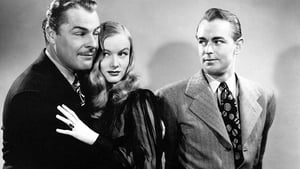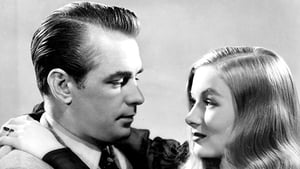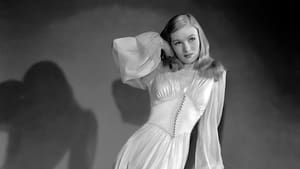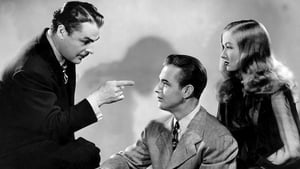Contact: info@alwanfilm.com
Video Sources 0 Views
- Watch trailer
- The Glass Key 1942

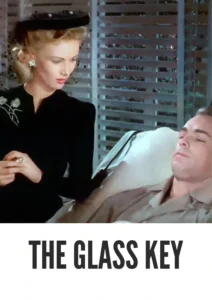
Synopsis
Table of Contents
ToggleReview: The Glass Key 1942 Colorized – A Classic Noir Thriller Illuminated in Vivid Color

Introduction
“The Glass Key” (1942) stands as a quintessential example of the film noir genre, weaving a tale of intrigue, betrayal, and redemption against the backdrop of a corrupt and dangerous world. In this article, we’ll explore the significance of this early colored film and its enduring impact on the landscape of cinematic storytelling.
Check The Full Colorized Movies List
Check Our Colorized Movies Trailer Channel
Understanding The Glass Key 1942 Colorized: Director, Cast, and Genre
Directed by the visionary Stuart Heisler, “The Glass Key” (1942) showcases his mastery of suspense and tension, drawing audiences into a shadowy world where morality is a fleeting concept and loyalty comes at a steep price. The film features a stellar cast, including Alan Ladd, Brian Donlevy, and Veronica Lake, whose performances bring depth and nuance to their flawed and complex characters. As a classic example of the film noir genre, “The Glass Key” (1942) explores themes of corruption, power, and the dark underbelly of society with a raw and unflinching gaze.
Exploring the World of The Glass Key 1942 Colorized: Plot and Characters
At its heart, “The Glass Key” (1942) follows the tangled web of relationships and allegiances that ensnare a political fixer, portrayed by Alan Ladd, and a corrupt politician, played by Brian Donlevy. When a murder implicates the politician’s daughter, portrayed by Veronica Lake, the fixer is drawn into a dangerous game of cat and mouse where nothing is as it seems. As secrets are uncovered and alliances are tested, the stage is set for a gripping showdown that will determine the fate of all involved.
The Art of Film Colorization
Film colorization serves as a transformative tool that enhances the visual experience of classic movies, breathing new life into timeless stories and captivating audiences with vibrant hues. By digitally adding color to black and white films, colorization allows viewers to immerse themselves in the rich tapestry of cinematic worlds, exploring every nuance and detail with fresh eyes and renewed appreciation.
Early Colored Films: A Brief History
The history of colored films traces its roots back to the early days of cinema, with filmmakers experimenting with various techniques to add color to their creations. From hand-tinted frames to early Technicolor processes, the evolution of colored film has been marked by innovation and ingenuity, paving the way for the development of modern colorization techniques that continue to captivate audiences to this day.
The Glass Key 1942 and Its Early Colored Version
The decision to release “The Glass Key” (1942) in a colorized format was met with both excitement and trepidation. While some welcomed the opportunity to experience the film in vibrant color, others expressed concerns about the potential impact on its visual aesthetic. Nevertheless, the early colored version of “The Glass Key” (1942) offers viewers a fresh perspective on the classic noir thriller, enhancing its atmospheric qualities and immersing audiences in its shadowy world of intrigue and deception.
The Debate Over Film Colorization
The debate over film colorization continues to divide audiences and critics alike, with proponents praising its ability to breathe new life into classic movies and introduce them to a new generation of viewers, while detractors argue that it compromises the artistic integrity of the original work and diminishes its historical significance. As the debate rages on, filmmakers and audiences alike are left to ponder the merits and drawbacks of colorization in the ever-evolving landscape of cinema.
Examining The Glass Key 1942 as an Early Colored Film
As with any colorized classic, the impact of colorization on “The Glass Key” (1942) is a matter of personal interpretation. Some may argue that it enhances the film’s visual appeal and immerses viewers in its world, while others may feel that it detracts from the stark beauty of the original black and white version. Regardless of one’s stance on the issue, there’s no denying the enduring power of “The Glass Key” (1942) as a timeless noir thriller that continues to captivate audiences with its gripping narrative and unforgettable characters.
Influence and Legacy: The Glass Key 1942 Colorized’s Impact on Cinema
“The Glass Key” (1942) has left an indelible mark on the world of cinema, inspiring countless filmmakers and captivating audiences with its dark and atmospheric storytelling. From its unforgettable performances to its moody cinematography, the film continues to resonate with viewers of all ages, reaffirming its status as a beloved classic of the film noir genre.
Director’s Cinematic Legacy: Beyond The Glass Key 1942 Colorized
Stuart Heisler’s influence extends far beyond “The Glass Key” (1942), with a diverse body of work that continues to captivate audiences around the globe. From “Storm Warning” to “Tokyo Joe,” Heisler’s films are celebrated for their tension-filled narratives, complex characters, and evocative imagery, solidifying his legacy as one of the preeminent directors of the film noir era. Through his groundbreaking work, Heisler has left an indelible imprint on the world of cinema, inspiring generations of filmmakers to follow in his footsteps.
Themes Explored in The Glass Key 1942 Colorized
“The Glass Key” (1942) explores a myriad of themes, from the corrupting influence of power to the fragility of loyalty and trust. Through its morally ambiguous characters and labyrinthine plot, the film invites viewers to ponder the complexities of human nature and the consequences of our actions. As audiences immerse themselves in the murky world of “The Glass Key” (1942), they are reminded of the fine line between right and wrong and the often-devastating consequences of crossing it.
Reception and Controversy Surrounding The Glass Key 1942 Colorized
Upon its release, “The Glass Key” (1942) received widespread critical acclaim, with many praising its atmospheric cinematography, taut screenplay, and standout performances. However, the decision to release the film in a colorized format sparked debate among purists, reigniting the age-old discussion surrounding film preservation and artistic integrity. Despite the controversy, “The Glass Key” (1942) remains a beloved classic that continues to captivate audiences with its timeless tale of intrigue and betrayal.
Where to Watch The Glass Key 1942 Colorized Online
For those eager to experience the timeless magic of “The Glass Key” (1942), the film is readily available on popular streaming platforms such as Netflix, Amazon Prime, and Hulu. Whether you choose to watch it in its original black and white format or the early colored version, “The Glass Key” (1942) promises to transport you to a world of shadowy intrigue and danger, where loyalty is a luxury and betrayal is a way of life.
FAQs About The Glass Key 1942 Colorized
Q: Is “The Glass Key” (1942) based on a true story? A: No, “The Glass Key” (1942) is a fictional tale crafted by screenwriter Jonathan Latimer, who drew inspiration from the hard-boiled detective novels of Dashiell Hammett.
Q: Who are the main actors in “The Glass Key” (1942)? A: “The Glass Key” (1942) features a stellar cast led by the talented Alan Ladd, Brian Donlevy, and Veronica Lake, whose performances bring depth and nuance to their flawed and complex characters.
Q: What awards did “The Glass Key” (1942) win? A: While “The Glass Key” (1942) did not win any major awards, it received critical acclaim for its atmospheric cinematography, taut screenplay, and standout performances.
Q: Why was “The Glass Key” (1942) released in a colorized format? A: The decision to release “The Glass Key” (1942) in color was made to introduce the film to a new generation of viewers and enhance its visual appeal for modern audiences. While the choice to colorize the film sparked debate among purists, it ultimately allowed “The Glass Key” (1942) to reach a wider audience and ensure its continued relevance in the annals of cinematic history.
Conclusion
As we reflect on the enduring legacy of “The Glass Key” (1942), let us celebrate its status as a timeless classic that continues to captivate audiences with its gripping narrative, unforgettable characters, and atmospheric cinematography. Whether viewed in its original black and white format or the early colored version, “The Glass Key” (1942) remains a shining example of the film noir genre and a testament to the enduring power of cinema to transport us to another time and place.
